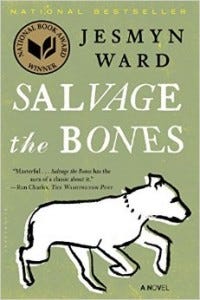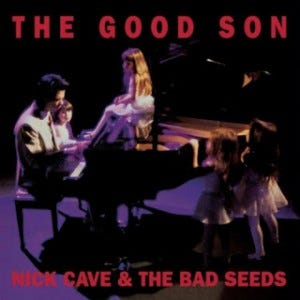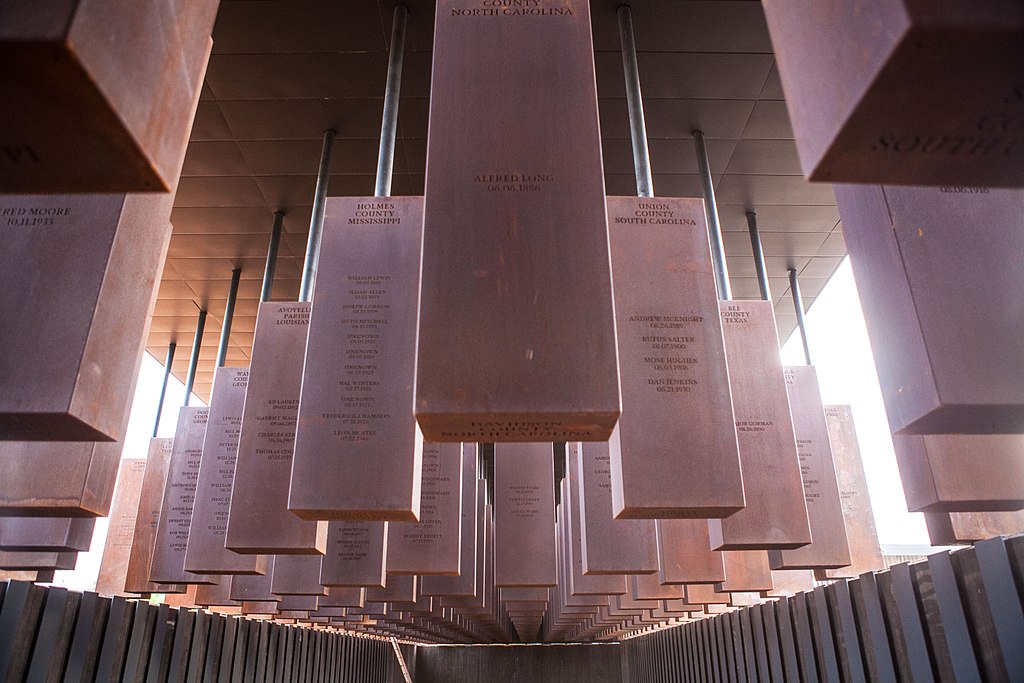Books & Culture
Media Frankenstein: As I Lay Dying


THE HEAD: Salvage The Bones by Jesmyn Ward (2011)
“After my 9th grade year, we read As I Lay Dying,” confides Esch, the 14-year-old pregnant narrator of Jesmyn Ward’s National Book Award-winning novel, Salvage the Bones, “and I made an A because I answered the hardest question right: Why does the young boy think his mother is a fish?” Esch speaks truer than she knows and not just because Esch’s mother is dead, like Vardaman’s mother in As I Lay Dying. To say that Ward’s story of a hardscrabble Delta family battening down in the path of Hurricane Katrina bears a resemblance to Faulkner’s 1930 modernist masterpiece of dirt-poor Mississippi sharecroppers on an odyssey to bury their dead matriarch is surely an understatement. The books are all but long lost siblings and both of them, poignantly, novels of blood — the kind that binds us each to each, the kind that spills from open wounds, “the wild blood [boiling] away” and “the terrible blood” “[shaping and coercing]” “to the forlorn echo of the dead word high in the air,” in Faulkner’s aggressively beautiful phrasing. In the opening pages of Salvage the Bones, watching puppies emerge from the “blooming” insides of her brother’s champion pitbull China, Esch is Faulkner’s Dewey Dell, who bides in the barn with the family milk-cow, hearing her “warm, sweet, stertorous, moaning.” Esch’s brother, tough guy Skeetah, who profits from China in fights to the death, is none other than Faulkner’s Jewel, coveting his rebel horse. Esch’s drunken dad is Anse; her little brother Junior is Vardaman Bundren; while Esch’s mother, dead herself, is misanthropic schoolmarm Addie, out of whose living absence the book coalesces, though Esch’s mother, unlike Addie, never speaks her fears aloud. Even Katrina, whose monstrous encroachment gets a stark, un-Faulknerian treatment by Ward, has its own corollary in As I Lay Dying in the river in flood that unseats Addie’s coffin. In most every respect, the Batistes are the Bundrens, except for the fact that they’re black and not white, and that their experience doesn’t emerge from the early 1900’s in rural Mississippi but the Gulf Coast, late August 2005, a tropical depression forming. The plots of the novels are outwardly different. Where As I Lay Dying suffuses a basic quest narrative with enough family intrigue and deceit to overflow the bounds of a Shakespearean tragedy, Salvage the Bones is more meditative, fraught with everyday struggle — though no less epic — and takes its course day by day in the two weeks leading up to Katrina. Esch flounders in an all-male world. Promiscuous with older boys, the Sally Brown to Skeetah’s Charlie in the dogfighting underground of Bois Savage Parish and not quite receiving blue-ribbon advice on the birds and the bees from her drunk, stressed-out father, she keeps her pregnancy a secret, hoping it will go away. Her mother’s loss is palpable, a wound in her that won’t stop bleeding. What’s more she died in childbirth while having Esch’s brother Junior, the last of four siblings that make up the family; Esch, it seems, is next in line. As Addie intones from beyond the grave in As I Lay Dying: “My father said that the reason for living is getting ready to stay dead… And now [my husband] has three children that are his and not mine. And then I get could ready to die.” In a Biblical turn befitting Salvage the Bones’ Southern Gothic lineage, Hurricane Katrina, arriving in the novel’s climax and in the last trimester of Esch’s pregnancy, becomes a terrible, Kali-like surrogate mother to Esch and her siblings and all the folk, really, unlucky enough to be caught in her path. Ward writes: “[Katrina] left us a dark Gulf and salt-burned land. She left us to learn to crawl. She left us to salvage. Katrina is the mother we will remember until the next mother with large, merciless hands, committed to blood, comes.” Just like the flooded river and later the burning barn in As I Lay Dying, Hurricane Katrina becomes a disaster of Biblical import that drives the Batistes, like the Bundrens before them, along the last line of their human defenses, exposing their anomie, testing their love. But Ward’s novel at last is more than a book-length allusion to As I Lay Dying with lyrical language and oversized themes. It bristles with M.O.’s unique to its author: poverty, race, empathy, womanhood, the political made personal and single-parent families, all come under Ward’s sharp eye; even and especially the region in which the book’s story is set, also a preoccupation of Faulkner’s. Indeed Ward’s sense of place in Salvage the Bones is so unbelievably rooted, yet occupied by characters so seemingly rootless it begins to embattle the mind of the reader. The American South reveals itself as the gorgeous, grotesque clusterfuck that it is — a motherless child muscled under the waves in order to be born anew.

THE TORSO: Undertow dir. David Gordon Green (2004)
The absent mother in David Gordon Green’s Undertow is more starkly drawn than Mama Batiste, though her name, “Audrey,” spoken with beleaguered reverence by the sons and husband she has left behind, somewhat resembles Faulkner’s “Addie.” All her two boys Chris (Jamie Bell) and Tim (Devon Alan) remember of her is her perfume and the “little mustache” she wore, while her hard working straight-arrow of a husband, John (Dermot Mulroney), hasn’t had a free moment to mourn her passing between raising his sons and overseeing the running of their Georgia family farm. Initially similar to Ward’s novel in its painterly depiction of impoverished country living — though Terrence Malick’s Days of Heaven (1978)might be a more apt cinematic companion — Undertow soon lurches into Night of the Hunter-modewith the arrival of John’s nogoodnik ex-con brother Deel (played with lascivious glee by Josh Lucas), who keeps not-so-surreptitiously mentioning a hoard of old Mexican coins that Grandaddy Munn has hidden somewhere on the property. As soon as things go south with Deel (never a question of if, but when), Chris and Tim flee into wide-open country with the Mexican coins bundled up in a sock and their greasy and murderous uncle pursuing. The rest of the film is a chase narrative broken up by eccentric, poetic vignettes: a couple doing B-ball layups amid chicken coops in their unpaved driveway; a snaggletoothed shop-girl who chokes on her gum while flirting on the sly with Deel. But apart from its aura of dirty realism, the Biblical throwdown of brother on brother and of course the pronouncedly MIA mother, what Undertow most shares with As I Lay Dying is the chasm that separates all human beings, realized in the novel’s structure through first-person chapters that only crossover to highlight the gaps in their speakers’ desires, the unknowable babble of head-space not yours. Addie echoes these gaps in her posthumous chapter, mulling on her husband Anse: “Sometimes I would lie by him in the dark, hearing the land that was now of my blood and flesh, and I would think: Anse. Why Anse. Why are you Anse. I would think about his name until after a while I could see the word as a shape, a vessel, and I would watch him liquefy and flow into it like cold molasses flowing out of the darkness into the vessel, until the jar stood full and motionless: a significant shape profoundly without life like an empty door frame; and then I would find that I had forgotten the name of the jar.” Elder brother Chris expresses a similar existential-familial terror in voiceover as he and Tim hop a freight train, fleeing Deel: “I was thinking about dad, how he spoke to us, like he was afraid. When he looked me in the eye, sometimes, I believe he had no idea who I was. Or didn’t care. Who was this kid? How did he spring from me? I like the questions you ask yourself.” While Esch and Skeetah in Salvage the Bones are brutally mothered by Hurricane Katrina, Chris and Tim in Undertow are mothered by violence in the form of their psychotic Uncle Deel. That the culmination of this mothering or un-mothering, as it were, takes place outside of an orphan’s encampment in the woods of Georgia (a sort of Southern Gothic Never-Never-Land) is more than sufficient to underscore Gordon Green’s imputation that the South is a shifting and motherless place, home and hearth to so many, safe harbor for none. The baptism by blood at the end of the film is as powerful as anything from Flannery O’Connor; it recalls Faulkner’s flood, Jesmyn Ward’s hurricane — regeneration through destruction. At the risk of a SPOILER ALERT it’s worth noting that As I Lay Dying has a very bleak ending, whereas Salvage the Bones and Undertow are more forward-looking, more searching, more hopeful. Addie Bundren dies, stays dead; Ward and Gordon Green’s mothers reincarnate, renew. The American South is a barefooted orphan with crust in its eyes and a bloody, dark heart but that doesn’t mean someone still won’t adopt it, wipe its face off, teach it love.

THE LEGS: Nick Cave and the Bad Seeds’ The Good Son (1990)
In spite of the fact that he was born in Warracknabeal, Australia, singer-songwriter Nick Cave has always been preoccupied with the American South and its mythos of salvation and decay. Nowhere is this more apparent than on Nick Cave and the Bad Seeds’ first handful of studio albums, among them The Firstborn is Dead (1985), which begins with a crowing epic of river-flood called “Tupelo”; Your Funeral… My Trial (1986), which includes the Harry Crewes-esque funhouse dirge “The Carny”; and The Good Son (1990), perhaps the subtlest of all his forays into Southern Gothic, which, as per most of Nick Cave, isn’t very subtle at all. The author of the 1998 novel And the Ass Saw the Angel, itself composed in a pastiche southern dialect that recalls Boo Radley having an epileptic fit, Nick Cave spins a dark, elemental yarn on The Good Son that furthers Ward and Gordon Green’s notions of motherlessness brokered and redeemed through violence, illness, natural disaster and family struggle, all by way of Faulkner and his lineage. Indeed, The Good Son’s resemblance to the work of Faulkner, specifically, As I Lay Dying, seems as intentional in many ways as Salvage the Bones’. Just like in Faulkner’s novel, there is pilgrimage, Biblical flood, family struggle, existential floundering, grim levity mixed with inchoate grief. “The Hammer Song,” which describes a prodigal son’s flight from the woebegone land of his genesis — “And though I left quite quietly/ My father raged and raged/ And my mother wept” — might well apply to As I Lay Dying’s Jewel, who toils under his own steam and against his family’s wishes to buy a horse as arrogant and hardheaded as he is. Or take “The Weeping Song,” which could well be the stoic mourning call of eldest Bundren sibling Cash — “This is a weeping song/ A song in which to weep/ While all the men and women sleep/ This is a weeping song/ But I won’t be weeping long…” — who can no more express his devastation at the loss of his mother Addie than resist showing her, as she lies dying, the coffin he’s in the process of building her “on a bevel” so she can rest comfortably in it when her time arrives And yet it’s in the divergence of Nick Cave’s work from Ward and Gordon Green’s that its true power as part of the Southern Gothic diaspora emerges. Cave, an Australian, has always painted the American South with hyper-real, cartoonish strokes; clearly, he is well versed in its literary tradition — he described his own novel And the Ass Saw the Angel as “a comic novel in the manner of Flannery O’ Connor’s Wise Blood” — although a reverence for American Lit does not an American make. In The Good Son’s title track, Cave sings of a benighted young man not unlike Darl Bundren from As I Lay Dying with all the subtlety and originality of tent revival religion: “The good son has sat and often wept/ Beneath a malign star by which he’s kept/ And the night-time in which he’s wrapped/ Speaks of good and speaks of evil…” But such backwoods bombast works to Nick Cave’s advantage. His privileged perspective of an outsider looking in on the forlorn horror-show of the American South lends him unique insight, some might even say, authority. And the outsized absurdity of his caricatures, so different from Ward and Gordon Green’s dirty realism, brings him closer to what Flannery O’ Connor in her 1960 essay “Some Aspects of the Grotesque in Southern Fiction” calls “the strange skips and gaps” that “lean away from typical social patterns, toward mystery and the unexpected.” Even so if the South is essentially placeless, a condition of mind gussied up as a region, who is to say that Nick Cave can’t be Southern — a spitting, howling, storm-dark prophet? O’Connor goes on to write: “There is another reason in the Southern situation that makes for a tendency toward the grotesque and this is the prevalence of good Southern writers… The presence alone of Faulkner in our midst makes a great difference in what the writer can and cannot permit himself to do. Nobody wants his mule and wagon stalled on the same track the Dixie Limited is roaring down.” The South may be an orphaned place but what a bunch of foster parents: folk who stake their very lives to show it no better or worse than it is.
Alternative Cuts:
The Violent Bear It Away by Flannery O’ Connor (1960); Nick Cave and the Bad Seeds’ The First Born is Dead (1985); The Gift dir. Sam Raimi (2000) or The Apostle dir. Robert Duvall (1997)
Mud dir. Jeff Nichols (2013); Other Voices, Other Rooms by Truman Capote (1948); Bonnie Prince Billy’s I See a Darkness (1999)
His Hero is Gone’s Fifteen Counts of Arson (1996); Gummo dir. Harmony Korine (1997); The Orange Eats Creeps by Grace Krilanovich (2010)
The Neverending Story by Michael Ende (1979); The Arcade Fire’s Funeral (2004); Beasts of the Southern Wild dir. Benh Zeitlin (2012)
As I Lay Dying dir. James Franco (2013); Directing Herbert White: Poems by James Franco (2014); Daddy’s MotorCity (2012)
Previous MEDIA FRANKENSTEINS:
In Two Weeks: Fundamentally Unreliable









